Top Photo: Rat snake crosses path in front of me.
A walk around our outdoor loop through the Dinosaur Trail, Explore the Wild, and Catch the Wind can be relaxing and rewarding. You never know what you’re going to run into. Anything from snakes to folded-wing skippers is possible, and frankly, expected.
Here’s some of the things I bumped into this past week.
The photos above and below are of a common local resident, rat snake. The individual above is about average length. It looks to be a five-footer. They can, though, reach eight feet.
Rat snakes are excellent climbers and frequently slither up trees in search of avian food.

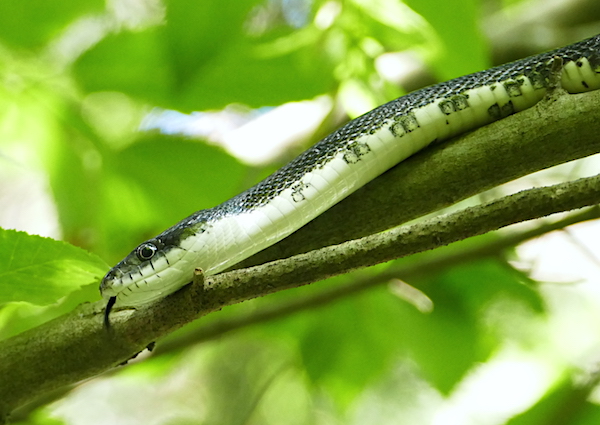
The floating walkway in our wetlands is always worth a visit. You’ll see mosquito fish, bullfrog tadpoles, a handful of Odonata species, and maybe even an otter. Looking closer, especially at the vegetation that grows on the floating platforms alongside the deck you may spot a far less conspicuous creature, a cattail toothpick grasshopper. Here, a mating pair on common rush.

Always fun to watch wherever you find them are green anoles. At this time of year the males are strutting their stuff letting all other males, and females, know they’ve arrived.
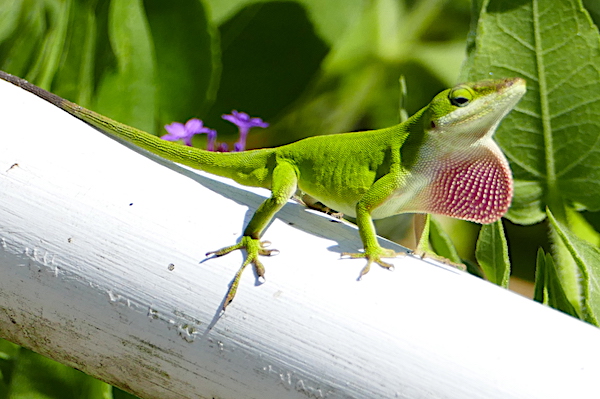

A butterfly which is widespread throughout the warm months is the red-spotted purple.
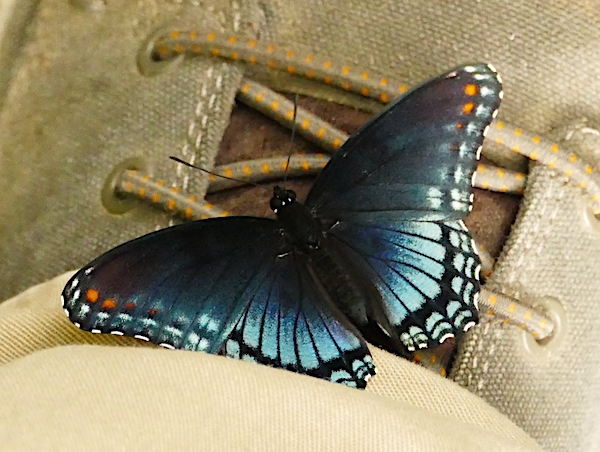
Keep an eye out for hatchling aquatic turtles. There’re still some of the young turtles emerging from subterranean nests dug and egg-filled last year by adult females.
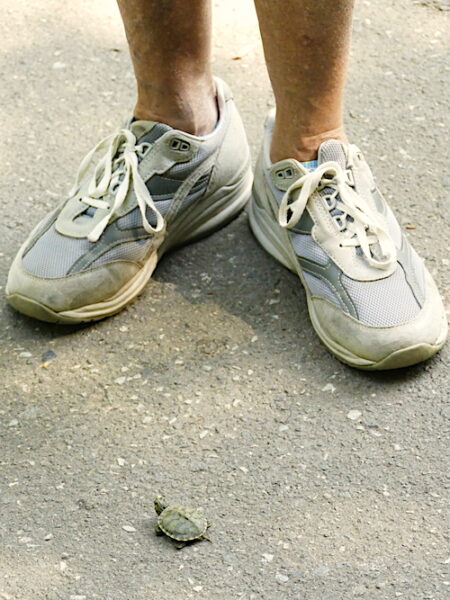
In fact, keep an eye out for adult female sliders and other aquatic turtles up on land searching for secure nesting sights. The one pictured below was at the Red Wolf Enclosure.
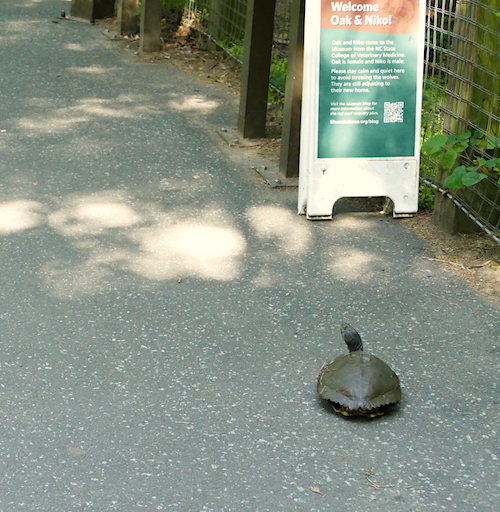
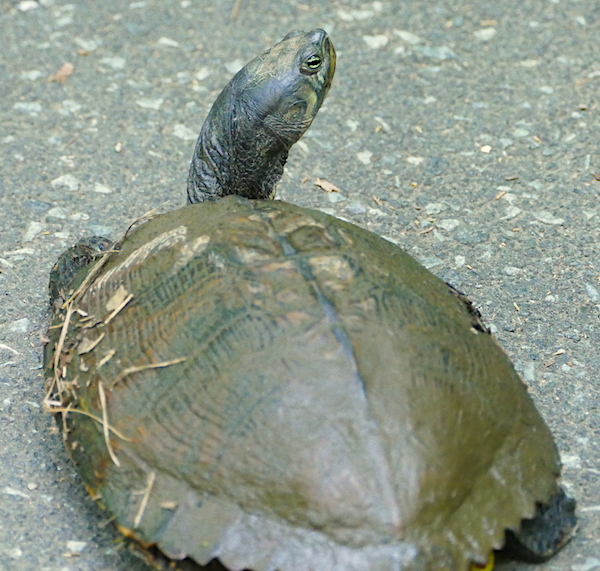
Besides the red-spotted purple above, another butterfly you may see while hiking the outdoor loop is the summer azure. They usually stay fairly low to the ground. Though small, they’re quite visible as they flutter away.

Summer tanagers are nesters here at the museum. The males are bright red. Even so, they can be difficult to locate among the greenery of the tulip poplars, maples, sweetgums, and other deciduous trees on the north side of our campus.
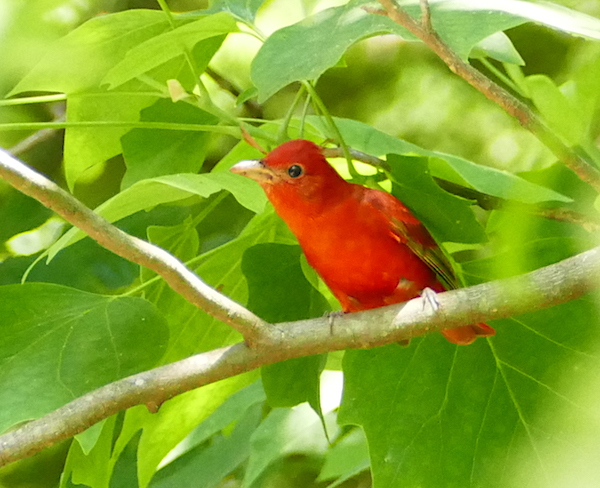
A small and quick moving butterfly frequently encountered conspicuously perched in sunny spots of the path are zabulon skippers. The males are more commonly seen than the females, which are also darker in color.
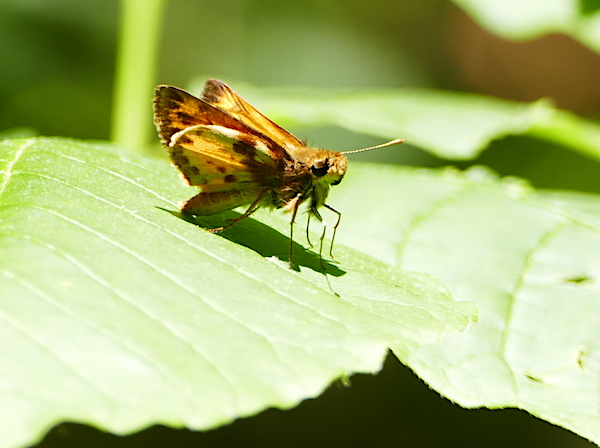
Larger elm leaf beetles are back. Over the past couple of years we’ve been visited by hordes of these beetles in adult and then larval form. The larvae eat elm leaves, skeletonizing them, rendering them useless as the photosynthetic units they’re meant to be.
They’re supposedly cyclical and only appear in large numbers for a couple of years, then disappear. We’ll be testing that statement this year.
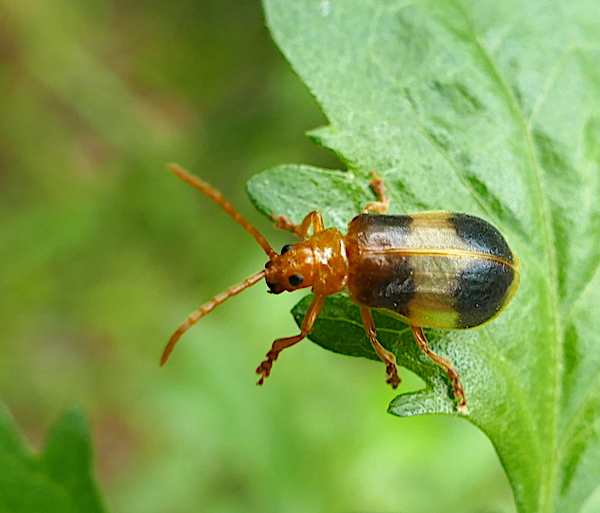
Another beetle which doesn’t come in as large numbers nor does as much damage is the milkweed leaf beetle. Most people wouldn’t consider damage to milkweed as a problem. Monarch lovers might disagree (monarch butterflies are closely tied to and owe their existence to milkweed). I recently found a few milkweed leaf beetles on the milkweed in front of the Butterfly House.
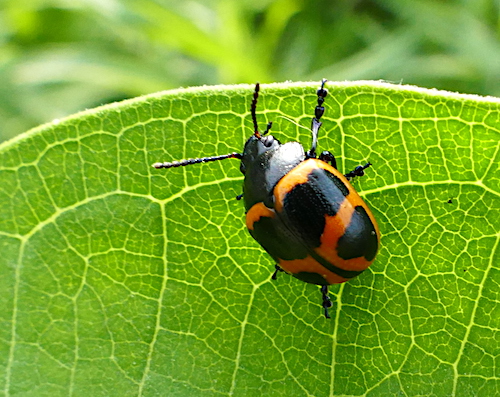
Yarrow comes in many colors.

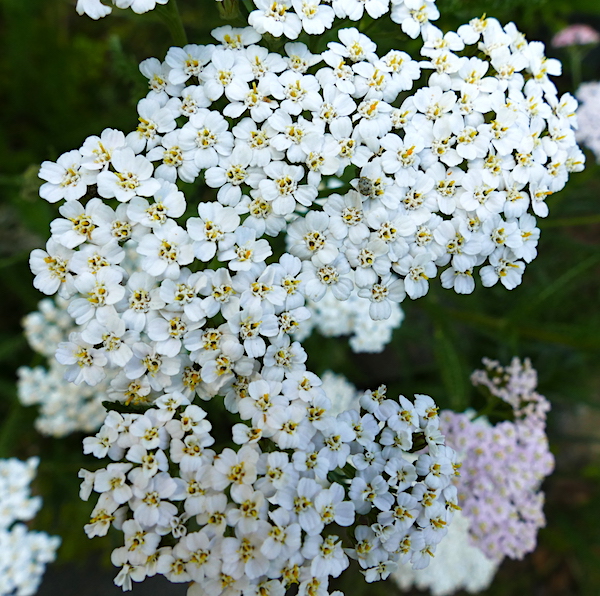
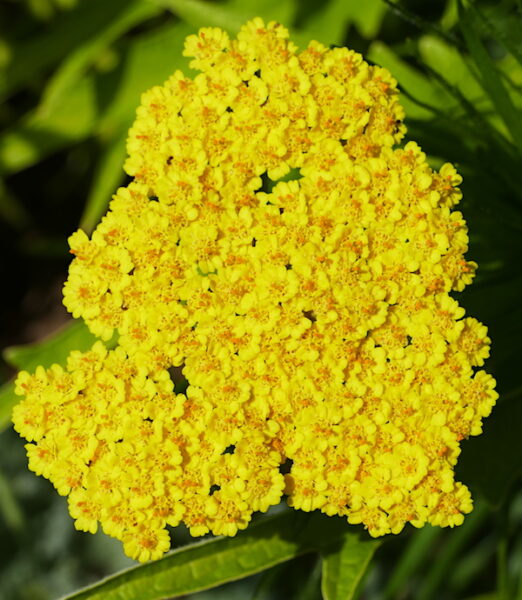
Dogbane leaf beetles have emerged from the ground as adults. This, after having spent the previous fall and winter months underground as larvae eating dogbane’s roots, eventually pupating and surfacing as an adult beetle to once again consume the plant’s leaves while searching for a mate to start the cycle all over again.
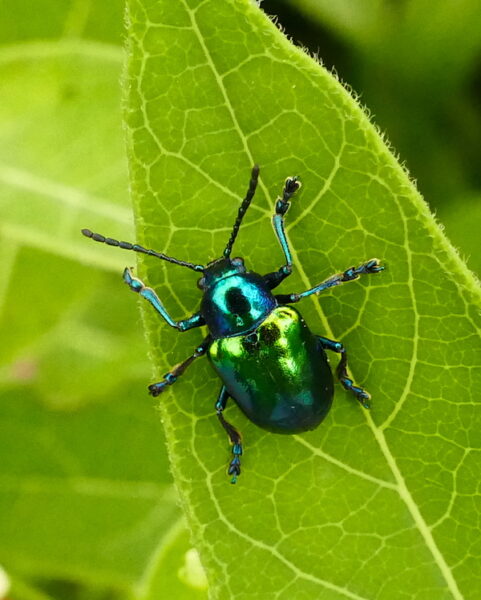
Daisy fleabane is a small, delicate flower.
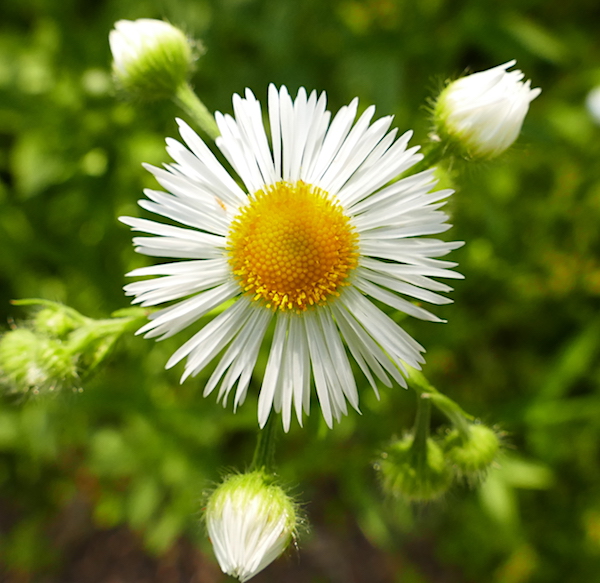
And finally, a familiar and favorite flower to insect and human alike, black-eyed Susan.
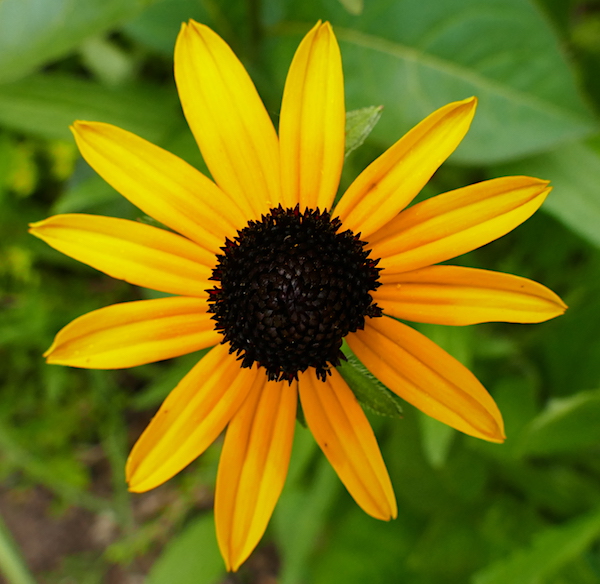
So, what are you waiting for?